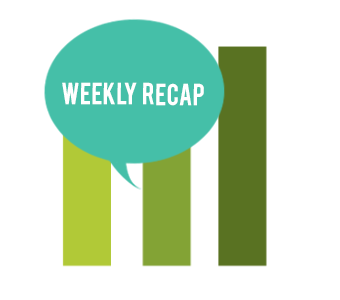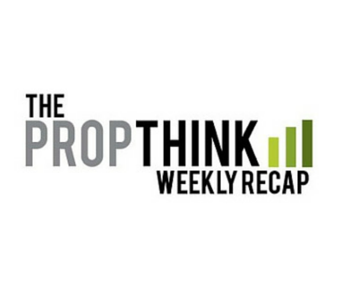As expected, Trillium Therapeutics (SCTPF)(TR.TO) announced this week an upcoming reverse-split, NASDAQ uplisting, and reiterated the timeline for bringing its SIRPaFc antibody-like fusion proteins into the clinic (human testing). We suggested eyeing a long position in Trillum just two weeks ago, explaining why the anti-CD47 approach was attracting so much attention in oncology despite having just recently entered human testing – already the stock has risen 25%.
Not familiar with this tiny, Canadian biotech? Learn more in our previous research at PropThink.com.
This week’s news comes as no surprise: long ago Trillium made the uplisting a goal for 2014. Currently listed on the Toronto and OTC exchanges, the company plans to affect a 30-for-1 reverse split, reducing its outstanding sharecount to just over 4.3 million and share price to ~$8.00 in order to migrate to the NASDAQ. Trillium still guides to file an Investigational New Drug application in the second half of 2015; a pre-IND meeting will take place with the FDA at the end of January. This isn’t a major event, but demonstrates progress towards human trials.
Trillium has also completed additional non-GLP non-human primate safety and pharmacokinetic studies, which will inform the design of formal IND-enabling toxicology studies. These studies are expected to commence in the first quarter of 2015. As we outlined previously, potential limitations for TTI-621 and TTI-622 involve the drugs’ binding to red blood cells (RBCs) and platelets. Thus far in non-human primates, RBC-binding has occurred at doses well above expected therapeutic dose levels. Read more in our previous research.
On Tuesday we outlined a short-term idea based on one biotech stock’s highly defined trading range. The equity has bounced between the top and bottom of a +/- 20% channel for most of the summer and fall, and as it trades at the bottom of the trend currently, this remains an attractive place to put money to work for a potential 20% gain if the stock returns to previous resistance. Read more here and get the full gamut of PropThink trades with our Premium subscription service.

Last week, preliminary data for bluebird bio (BLUE)’s Lentiglobin were released as part of the abstract dump ahead of ASH in December (we wrote about BLUE here). On Wednesday alongisde the company’s third quarter financial results, Mr. Fink explained in detail what we’ve learned about bluebird’s forthcoming data, due in less than a month. Most interesting, perhaps, is that there appears to be a dose-dependent (cell count and VCN) phenomenon with the Lentiglobin gene therapy product, not surprising, though this is the first evidence of this effect.
As of July 31, 3 subjects enrolled in the NORTHSTAR study have received LentiGlobin (2 additional patient await treatment); follow-up hemoglobin expression was available in just one patient. This patient, subject 1102, did not achieve full transfusion-independence and received a rescue transfusion of pRBC (packed red blood cells) on day +96 because of fatigue and ultimately, low hemoblogin (8.6 g/dl). Subjects 1102 and 1104 both received a lower CD34+ cell dose (mean 5.95 x 106/kg) and lower VCN (Vector Copy Number, mean 0.9) than subjects 1201/1202 who achieved independence in study HGB-205. Measured by ßA-T87Q globin expression, there’s a clear difference in “efficacy” between the ‘low dose’ and ‘high dose’ ß-thalassemia patients. Although this is a very early assessment, there may be a CD34+ and VCN threshold (‘high-dose’) necessary to achieve appropriate ßA-T87Q-globin and transfusion independence.
In the article, Mr. Fink explores further this dose-dependent relationship and outlines what investors can look for at ASH – and what not to look for.
GlobeImmune (GBIM) is still the most overlooked, publicly traded hepatitis B stock. The company’s lead drug candidate, the ‘Tarmogen’-driven therapeutic GS-4774, is partnered with Gilead Sciences (GILD) for hepatitis B, and the larger biopharma company is running two phase 2 proof of concept studies testing -4774 in combination with standard antiviral regimens. Further, Celgene (CELG) has partnered with GBIM on its lead oncology candidate, also a Tarmogen-driven therapy, GS-6301.
GBIM has been under pressure since last month when the company released data from a phase 1 study of -6301 in the rare bone cancer, chordoma. The stock hit all-time lows in October and traded just above its cash position. However, Gilead is set to release topline results from one of the ongoing GS-4774 trials early next year. This ia a major value-driving event for GBIM, and for traders/investors interested in the hepatitis B facet, recent weakness makes for an attractive opportunity. Read our full report, free, by clicking here to understand why we like the risk/reward in GBIM ahead of 2015.
One or more of PropThink’s contributors are long SCTPF, GBIM, BLUE, GILD, or CELG.


